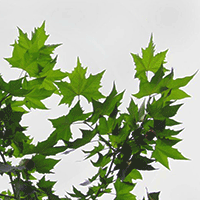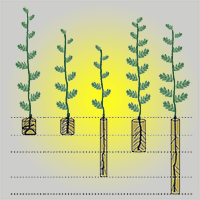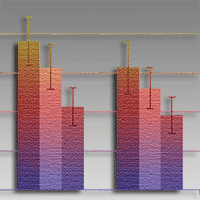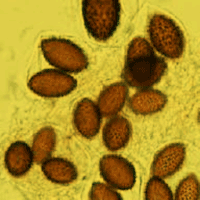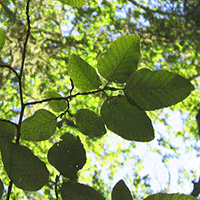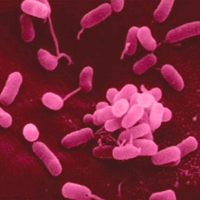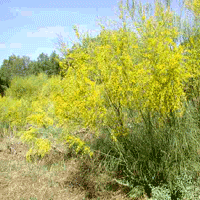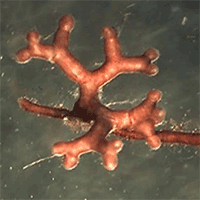Overburden waste dumps represent a huge threat to environmental quality. The reduction of their negative impact can be achieved by vegetation cover establishment. Usually, this action is complicated due to site-specific characteristics, such as nutrient deficiency, elevated metal concentration, low pH value, lack of moisture and lack of organic matter. Establishment of vegetation can be facilitated by inoculation with plant growth promoting bacteria (PGPB) which improve the physicochemical and biological properties of degraded substrates and make them more hospitable for plants. In this study we selected several strains based on the ability to produce ammonia, indole-3-acetic acid, siderophores and lytic enzymes, and to solubilize inorganic phosphates. This selection resulted in microbial consortia consisting of Serratia liquefaciens Z-I ARV, Ensifer adhaerens 10_ ARV, Bacillus amyloliquefaciens D5 ARV and Pseudomonas putida P1 ARV. The effects of PGPB consortia on one-year-old London plane (Platanus × acerifolia [Aiton] Willd.) seedlings replanted into overburden waste from Kolubara Mine Basin were examined. After seven months, inoculated seedlings were 32% higher with 45% wider root collar diameter and over 80% higher total dry biomass compared to uninoculated seedlings grown in Kolubara’s overburden. Inoculation resulted in higher amounts of total soluble proteins, higher chlorophyll and epidermal flavonoids content and higher total antioxidative capacity in the leaves. This study represents a successful search for effective PGPB strains and shows that microbial consortia have an important role in enhancing the growth of seedlings in nutrient deficient and degraded substrates such as overburden waste from open-pit coal mines. Positive response of London plane seedlings suggest that inoculation may help widening the opus of species for reforestation of post mining areas and speed up natural succession processes and recovery of degraded landscapes.
Keywords
, , ,
Citation
Karličić V, Radić D, Jovičić-Petrović J, Lalević B, Morina F, Curguz VGć, Raičević V (2017). Use of overburden waste for London plane (Platanus × acerifolia) growth: the role of plant growth promoting microbial consortia. iForest 10: 692-699. - doi: 10.3832/ifor2135-010
Academic Editor
Claudia Cocozza
Paper history
Received: Jun 14, 2016
Accepted: Apr 12, 2017
First online: Jul 17, 2017
Publication Date: Aug 31, 2017
Publication Time: 3.20 months
© SISEF - The Italian Society of Silviculture and Forest Ecology 2017
Open Access
This article is distributed under the terms of the Creative Commons Attribution-Non Commercial 4.0 International (https://creativecommons.org/licenses/by-nc/4.0/), which permits unrestricted use, distribution, and reproduction in any medium, provided you give appropriate credit to the original author(s) and the source, provide a link to the Creative Commons license, and indicate if changes were made.

Breakdown by View Type
(Waiting for server response...)
Article Usage
Total Article Views: 57615
(from publication date up to now)
Breakdown by View Type
HTML Page Views: 40002
Abstract Page Views: 3039
PDF Downloads: 13254
Citation/Reference Downloads: 51
XML Downloads: 1269
Web Metrics
Days since publication: 3058
Overall contacts: 57615
Avg. contacts per week: 131.89
Article Citations
Article citations are based on data periodically collected from the Clarivate Web of Science web site
(last update: Mar 2025)
Total number of cites (since 2017): 2
Average cites per year: 0.22
Publication Metrics
by Dimensions ©
Articles citing this article
List of the papers citing this article based on CrossRef Cited-by.
(1)
Alexander DB, Zuberer DA (1991)Use of chrome azurol S reagents to evaluate siderophore production by rhizosphere bacteria. Biology and Fertility of Soils 12: 39-45.
CrossRef |
Gscholar
(2)
Anderson GR (1958)Ecology of
Azotobacter in soils of the Palouse region: I. Occurrence. Soil Science 86: 57-62.
CrossRef |
Gscholar
(3)
Angsana R, Warinthorn S, Annop N, Pawinee C (2009)Combination effect of pH and acetate on enzymatic cellulose hydrolysis. Journal of Environmental Sciences 21: 965-970.
CrossRef |
Gscholar
(4)
Bradford M (1976)A rapid and sensitive method for the quantitation of microgram quantities of protein utilizing the principle of protein-dye binding. Analytical Biochemistry 72: 248-254.
CrossRef |
Gscholar
(5)
Calfapietra C, Peñuelas J, Niinemets T (2015)Urban plant physiology: adaptation-mitigation strategies under permanent stress. Trends in Plant Science 20: 72-75.
CrossRef |
Gscholar
(6)
Cappuccino JC, Sherman N (1992)Microbiology: a laboratory manual. Benjamin/Cummings Publishing Company, New York, USA, pp. 544.
Gscholar
(7)
Cawoy H, Debois D, Franzil L, Pauw ED, Thonart P, Ongena M (2014)Lipopeptides as main ingredients for inhibition of fungal phytopathogens by
Bacillus subtilis/amyloliquefaciens. Microbial Biotechnology 8: 281-295.
CrossRef |
Gscholar
(8)
Cerović ZG, Masdoumier G, Ghozlen NB, Latouche G (2012)A new optical leaf-clip meter for simultaneous non-destructive assessment of leaf chlorophyll and epidermal flavonoids. Physiologia Plantarum 146: 251-260.
CrossRef |
Gscholar
(9)
Chaiharn M, Chunhaleuchanon S, Kozo A, Lumyong S (2008)Screening of rhizobacteria for their plant growth promoting activities. KMITL Science and Technology Journal 8: 18-23.
Online |
Gscholar
(10)
Chanway CP (1997)Inoculation of tree roots with plant growth promoting soil bacteria: an emerging technology for reforestation. Forest Science 43: 99-112.
Online |
Gscholar
(11)
Dauga C (2002)Evolution of the gyrB gene and the molecular phylogeny of Enterobacteriaceae: a model molecule for molecular systematic studies. International Journal of Systematic and Evolutionary Microbiology 52: 531-547.
CrossRef |
Gscholar
(12)
Dominguez-Nuñez JA, Medina M, Berrocal-Lobo M, Anriquez A, Albanesi A (2015)The combined effects of
Pseudomonas fluorescens CECT 844 and the black truffle co-inoculation on Pinus nigra seedlings. iForest - Biogeosciences and Forestry 8: 624-630.
CrossRef |
Gscholar
(13)
Egamberdiyeva E (2007)The effect of plant growth promoting bacteria on growth and nutrient uptake of maize in two different soils. Applied Soil Ecology 36: 184-189.
CrossRef |
Gscholar
(14)
Gamalero E, Glick BR (2011)Mechanisms used by plant growth-promoting bacteria. In: “Bacteria in Agrobiology: Plant Nutrient Management” (Maheshwari DK ed). Springer-Verlag, Berlin-Heidelberg, Germany, pp. 17-46.
CrossRef |
Gscholar
(15)
Glick BR (2012)Plant growth-promoting bacteria: mechanisms and applications. Scientifica 1-15.
CrossRef |
Gscholar
(16)
Grandlic CJ (2008)Plant growth-promoting bacteria suitable for the phytostabilization of mine tailings. PhD thesis, Department of Soil, Water and Environmental Science, University of Arizona, Tucson, AZ, USA, pp. 227.
Online |
Gscholar
(17)
Ivanová H, Bernadovičová S, Pastirčáková K (2007)Influence of changed ecological conditions on occurrence of London plane (
Platanus × hispanica Münchh.) anthracnose. Folia Oecologica 34: 1-8.
Online |
Gscholar
(18)
Jha BK, Pragash MG, Cletus J, Raman G, Sakthivel N (2009)Simultaneous phosphate solubilization potential and antifungal activity of new fluorescent pseudomonad strains,
Pseudomonas aeruginosa, P. plecoglossicida and
P. mosselii. World Journal of Microbiology and Biotechnology 25: 573-581.
CrossRef |
Gscholar
(19)
Kang W, Bao J, Zheng J, Xu F, Wang L (2016)Potential of woody plants from a Tonglushan ancient copper spoil heap for phytoremediation of heavy metal contaminated soil. International Journal of Phytoremediation 25.
CrossRef |
Gscholar
(20)
Karličić V, Golubović Curguz V, Raičević V (2016)The alleviation of reforestation challenges by beneficial soil microorganisms. Reforesta 1: 238-260.
Online |
Gscholar
(21)
Karlidag H, Esitken A, Turan M, Sahin F (2007)Effects of root inoculation of plant growth promoting rhizobacteria (PGPR) on yield, growth and nutrient element contents of leaves of apple. Scientia Horticulturae 114: 16-20.
CrossRef |
Gscholar
(22)
Kaur H, Sharma P, Kaur N, Gill BS (2014)Tapping of native
Bradyrhizobium and
Ensifer sp. diversity for functional traits in soybean (
Glycine max (L.) Merrill). Legume Research 37: 651-657.
CrossRef |
Gscholar
(23)
Kloepper JW, Reddy MS, Rodríguez-Kabana R, Kenney DS, Kokalis-Burelle N, Martinez-Ochoa N (2004)Application for rhizobacteria in transplant production and yield enhancement. Acta Horticulturae 631: 219-229.
CrossRef |
Gscholar
(24)
Kowalski T (2013)Foliar diseases of broadleaved trees. In: “Infectious Forest Diseases” (Gonthier P, Nicolotti G eds). CAB International, Wallingford, UK, pp. 488-518.
Gscholar
(25)
Lucy M, Reed E, Glick BR (2004)Applications of free living plant growth-promoting rhizobacteria. Antonie van Leeuwenhoek 86: 1-25.
CrossRef |
Gscholar
(26)
Meena B (2014)Biological control of pest and diseases using fluorescent Pseudomonads. In: “Basic and Applied Aspects of Biopesticides” (Sahayaraj K ed). Springer, Dehli, India, pp. 17-30.
CrossRef |
Gscholar
(27)
Mia MAB, Shamsuddin ZH, Wahab Z, Marziah M (2010)Effect of plant growth promoting rhizobacterial (PGPR) inoculation on growth and nitrogen incorporation of tissue-cultured
Musa plantlets under nitrogen-free hydroponics condition. Australian Journal of Crop Science 4: 85-90.
Online |
Gscholar
(28)
Mimet A, Pellissier V, Quénol H, Aguejdad R, Dubreuil V, Rozé R (2009)Urbanisation induces early flowering: evidence from
Platanus acerifolia and
Prunus cerasus. International Journal of Biometeorology 53:287-298.
CrossRef |
Gscholar
(29)
Morina F, Jovanović LJ, Kukavica B, Veljović-Jovanović S (2008)Peroxidase, phenolics, and antioxidative capacity of common mullein (
Verbascum thapsus L.) grown in a zinc excess. Archives of Biological Science 60: 687-695.
CrossRef |
Gscholar
(30)
Nautiyal CS (1999)An efficient microbiological growth medium for screening phosphate solubilizing microorganisms. FEMS Microbiology Letters 170: 265-270.
CrossRef |
Gscholar
(31)
Panconesi A (1999)Canker stain of plane tree: a serious danger to urban plantings in Europe. Journal of Plant Pathology 81: 3-15.
Gscholar
(32)
Patten CL, Glick BR (2002)Role of
Pseudomonas putida indoleacetic acid in development of the host plant root system. Applied and Environmental Microbiology 68: 3795-3801.
CrossRef |
Gscholar
(33)
Pilotti M, Brunetti A, Tizzani L, Marani O (2009)Platanus x acerifolia genotypes surviving to inoculation with
Ceratocystis platani (the agent of canker stain): first screening and molecular characterization. Euphytica 169: 1-17.
CrossRef |
Gscholar
(34)
Pilotti M, Di Lernia G, Lumia V, Riccioni L (2014)Phytophthora cinnamomi causing stem canker and root rot of nursery grown
Platanus × acerifolia: first report in the Northern emisphere. Phytopathologia Mediterranea 53: 75-82.
CrossRef |
Gscholar
(35)
Pilotti M, Di Lernia G, Modesti V, Lumia V, Brunetti A (2015)Outcome of
Ceratocystis platani inoculations in
Platanus × acerifolia in relation to season and inoculum dose. iForest 9 (4): 608-617.
CrossRef |
Gscholar
(36)
Ribeiro CM, Cardoso EJBN (2012)Isolation, selection and characterization of root-associated growth promoting bacteria in Brazil Pine (
Araucaria angustifolia). Microbiological Research 167: 69-78.
CrossRef |
Gscholar
(37)
Ristović IM, Stojalović MP, Vulić M (2010)Recultivation and sustainable development of coal mining in Kolubara Basin. Thermal Science 14: 759-772.
CrossRef |
Gscholar
(38)
Rodriguez-Barrueco CE, Cervantes NS, Subbarao NS, Rodriguez-Caceres E (1991)Growth promoting effect of
Azospirillum brasilense on
Casuarina cunninghamiana Miq. seedlings. Plant and Soil 135: 121-124.
CrossRef |
Gscholar
(39)
Rojas-Tapias D, Moreno-Galván A, Pardo-Díaz S, Obando M, Rivera D, Bonilla R (2012)Effect of inoculation with plant growth-promoting bacteria (PGPB) on amelioration of saline stress in maize (
Zea mays). Applied Soil Ecology 61: 264-272.
CrossRef |
Gscholar
(40)
Rowell D (1994)Soil science: methods and application. Longman Scientific and Technical, London, UK, pp. 350.
Gscholar
(41)
Sharma PK, Fu J, Zhang X, Fristensky B, Sparling R, Levin DB (2014)Genome features of
Pseudomonas putida LS46, a novel polyhydroxyalkanoate producer and its comparison with other P. putida strains. AMB Express 4: 1-18.
CrossRef |
Gscholar
(42)
Singh M, Prakash NT (2012)Characterisation of phosphate solubilising bacteria in sandy loam soil under chickpea cropping system. Indian Journal of Microbiology 52: 167-173.
CrossRef |
Gscholar
(43)
Singleton VL, Rossi JA (1965)Colorimetry of total phenolics with phosphomolybdic-phosphotungstic acid reagents. American Journal of Enology and Viticulture 16: 144-158.
Online |
Gscholar
(44)
Skousen J, Zipper CE (2014)Post-mining policies and practices in the Eastern USA coal region. International Journal of Coal Science and Technology 1: 135-151.
CrossRef |
Gscholar
(45)
Sousa NR, Franco AR, Ramos MA, Oliveira RS, Castro PML (2015)The response of
Betula pubescens to inoculation with an ectomycorrhizal fungus and a plant growth promoting bacterium is substrate-dependent. Ecological Engineering 81: 439-443.
CrossRef |
Gscholar
(46)
Tredici P (2007)Disturbance ecology and symbiosis in mine-reclamation design. In: “Designing the Reclaimed Landscape” (Berger A ed). Taylor and Francis, UK, pp. 13-25.
Online |
Gscholar
(47)
Vidović M, Morina F, Milić S, Zechmann B, Albert A, Winkler JB, Veljović Jovanović S (2015)Ultraviolet-B component of sunlight stimulates photosynthesis and flavonoid accumulation in variegated
Plectranthus coleoides leaves depending on background light. Plant, Cell and Environment 38: 968-979.
CrossRef |
Gscholar
(48)
Vigouroux A, Olivier R (2004)First hybrid plane trees to show resistance against canker stain (
Ceratocystis fimbriata f. sp.
platani). Forest Pathology 34: 307-319.
CrossRef |
Gscholar
(49)
Whiteman SA, Stewart A (1998)Suppression of
Botrytis cinerea sporulation on irradiated grape leaf tissues by the antagonistic bacterium
Serratia liquefaciens. New Zealand Journal of Crop and Horticultural Science 26: 325-330.
CrossRef |
Gscholar
(50)
Yamamoto S, Kasai H, Arnold DL, Jackson RW, Vivian A, Harayama S (2000)Phylogeny of the genus
Pseudomonas: intrageneric structure reconstructed from the nucleotide sequences of
gyrB and
rpoD genes. Microbiology 146: 2385-2394.
CrossRef |
Gscholar
